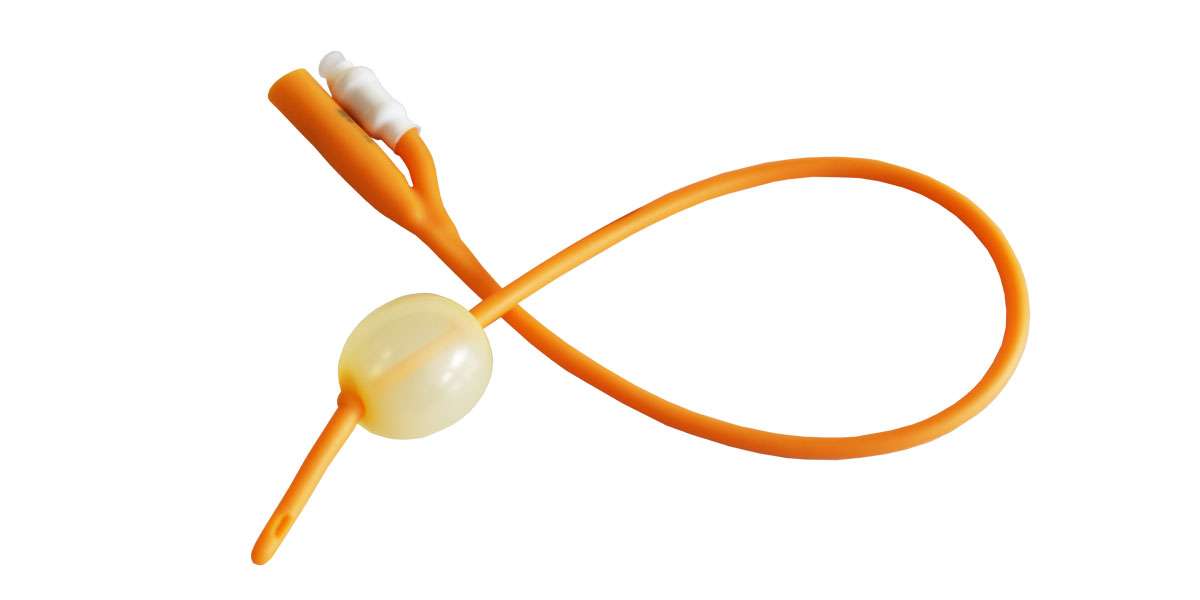A Foley balloon catheter is a flexible, sterile tube used for urinary drainage. It has a small balloon at the tip, which is inflated with sterile water after insertion into the bladder to keep it in place.

Uses of Foley Balloon Catheter
A Foley catheter is used in various medical situations where urinary drainage or bladder management is necessary. Below are the key applications:
Urinary Retention (Inability to Urinate)
Some patients cannot empty their bladder naturally due to conditions like:
- Prostate enlargement (Benign Prostatic Hyperplasia – BPH)
- Bladder outlet obstruction (tumors, strictures, or stones)
- Neurological disorders (stroke, spinal cord injury, multiple sclerosis, Parkinson’s disease)
A Foley catheter helps drain urine and prevents complications like bladder damage or infection.
Post-Surgical Use
- After surgeries involving the bladder, prostate, kidneys, or lower abdomen, a Foley catheter is placed to:
- Prevent urinary retention due to anesthesia or surgical swelling.
- Keep the bladder empty and allow healing.
- Reduce pressure on surgical sites to prevent leakage or complications.
- Monitor urine output in critically ill or post-operative patients.
- Common surgeries requiring Foley catheters:
- Prostate surgery (TURP, prostatectomy)
- Bladder surgery
- C-sections and gynecological procedures
- Spinal or abdominal surgeries
Urinary Incontinence (Loss of Bladder Control)
- Some patients have uncontrolled urine leakage due to:
- Nerve damage (diabetes, stroke, spinal cord injury)
- Severe dementia or Alzheimer’s disease
- Severe pelvic floor dysfunction
- A Foley catheter manages continuous urine drainage in cases where other treatments fail.
Critical Care & ICU Patients
- In intensive care units (ICUs), Foley catheters are used for:
- Accurate urine output monitoring (helps manage fluid balance, kidney function, and medication dosages).
- Preventing bedsores and infections in immobile patients.
- Managing unconscious or sedated patients who cannot urinate voluntarily.
Bladder Irrigation (Three-way Foley Catheter)
- In conditions like bladder bleeding (hematuria) or post-surgical recovery, a three-way Foley catheter is used for continuous bladder irrigation to:
- Flush out blood clots after bladder or prostate surgery.
- Prevent catheter blockages.
- Reduce the risk of urinary tract infections (UTIs).
Long-Term Catheterization for Chronic Conditions
- Some patients require long-term Foley catheter use, such as:
- Paraplegic and quadriplegic patients (spinal cord injuries)
- Multiple sclerosis (MS) or Parkinson’s disease patients
- Severe cases of urinary retention where surgery is not an option
End-of-Life & Palliative Care
- Foley catheters are often used in terminally ill patients to:
- Improve comfort by reducing the need for frequent bedpan changes.
- Prevent skin breakdown and infections from urine leakage.
- Manage urinary retention in hospice or bedridden patients.
Diagnostic Use (Urodynamic Studies & Imaging)
- A Foley catheter helps in diagnostic procedures, such as:
- Urodynamic studies (tests to evaluate bladder function in incontinence cases).
- Contrast imaging (Cystography, Urography) to check for bladder abnormalities.
Types of Foley Balloon Catheters
Foley Balloon catheters come in different designs to serve various medical needs. They vary in size, material, number of lumens (tubes), and special features. Below are the main types:
Two-Way Foley Catheter (Standard Type)
- Has two lumens (tubes):
- One for urine drainage
- One for balloon inflation (keeps the catheter in place inside the bladder)
- Used for general urinary drainage in short-term or long-term catheterization.
- Comes in various materials (latex, silicone, hydrogel-coated).
Uses:
- Urinary retention
- Post-surgical urine drainage
- ICU patients needing urine output monitoring
Three-Way Foley Catheter
- Similar to the two-way catheter but has an extra third lumen for bladder irrigation.
- Allows continuous flushing of the bladder with sterile fluid (saline or sterile water).
Uses:
- Post-prostate or bladder surgery (to prevent blood clots from blocking the catheter)
- Severe hematuria (blood in urine) cases needing constant flushing
- Bladder irrigation therapy for infection or stone removal
Coude (Curved-Tip) Foley Catheter
- Special curved tip designed for easier insertion in men with enlarged prostates (BPH).
- Prevents trauma or false passage in patients with urethral strictures or difficult anatomy.
Uses:
- Patients with prostate enlargement
- Urethral strictures or scarring
- Patients who experience difficulty with standard Foley catheter insertion
Silicone Foley Catheter
- Made of 100% silicone (latex-free)
- More biocompatible and hypoallergenic, reducing allergic reactions
- Has a larger internal lumen, allowing better urine flow
Uses:
- Long-term catheterization (less irritation than latex)
- Patients with latex allergies
- Reducing the risk of blockage (less encrustation)
Hydrogel-Coated Foley Catheter
- A silicone or latex catheter coated with hydrogel
- Becomes slippery when wet, reducing friction and discomfort during insertion
- Less irritation for long-term use
Uses:
- Patients needing long-term catheterization
Reducing trauma and discomfort during insertion and removal

